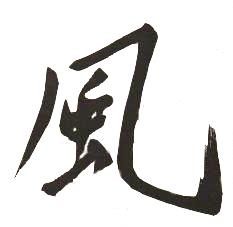 | home | home |
| Wind |
 |
| Profiling Wind |
| Symbolism |
The Wind is the symbol of things in a gaseous (proactive) state.
| Body Language |
A person embodying the Wind attitude usually has a voice which is high-pitched, yet with a calm and soothing tone. Their body language will demonstrate calmness, openness and receptiveness.
| Personality |
They will appear idealistic, perceptive and communicative. They can be rational, detached, objective and creative. They may be altruistic or overly-intellectual and unemotional. They are often evasive or elusive. They can suffer from jealousy, envy, suspicion, paranoia and panic. They prefer to think rather than to act.
| Fears |
They dislike situations that make them feel vulnerable or anxious.
| Desires |
They desire recognition and respect.
| Psychological Faculty |
They rely on their intellect for discovering the truth.
| Subjective Feeling |
During combat they feel slippery, elusive, tactical and unpredictable.
| Body Motion |
Their centre of gravity will appear to be in their chest, their movement will be characterised by torquing motions, with circular or angular footwork.
| Embodying Wind |
In order to apply WIND TACTICS successfully, the warrior should be in a WIND state of mind. The Kuji Kiri (mental focusing) process that follows is designed to develop through stimulus-response conditioning a "trigger" for entrance into a WIND state. Alternatively, step 1 can be replaced with visualisation of an EAGLE (or another animal that embodies the WIND principle).
| 1. Imagine your body is a strong WIND slipping through a forest of tall trees. |
2. Inhale quickly, hold for three seconds, then exhale for a count of eight seconds (SHORT IN - LONG OUT).
3. When feelings of detachment, objectivity and altruism are at their strongest, touch your thumbs together with your index fingers, forming two circles. Simultaneously say "I am the WIND."
4. Release your fingers and when ready, slowly rise.
5. Break your state by briskly walking for a few seconds.
6. Test your "anchor" for the WIND state by forming the finger circles once again, as you recite the vow "I am the WIND." If it has been successful you will experience feelings of detachment, objectivity and altruism. If you do not enter the WIND state, recycle to step 1.
When next you are feeling emotionally controlled, self-centred, intellectually pressed or lacking in compassion during sparring (or real combat), and desire to "Lighten up," fire off your trigger for the WIND state.
Wind Tactics
Zoning
The key defensive tactic associated with the Wind (Proactive) Attitude is Zoning. Zoning is a method of selecting a safe and effective place from which to consume or escape an opponent, while avoiding an opponent's strikes and kicks. To zone effectively, the Wind fighter should:
Move Laterally
to avoid a Linear Attack
Move Linearly in or out, down or up
to avoid a Lateral (Circular or Sideways) Attack
Faking
The offensive tactic associated with the Wind Attitude is Faking. The Wind Fighter begins by using Feinting to draw out an opponent's defensive strategies, then works out a way to get around these strategies. Additionally, the Wind Fighter will distract an opponent by stomping, pointing, shouting or looking in a specific direction in order to create a lapse in concentration which can be exploited. The Wind Fighter may also feign casualness, then when the opponent relaxes, attack resolutely. Additionally, the Wind Fighter uses changes in Timing to disrupt the opponent. They might change speeds to make the opponent unsettled; or attack in a broken rhythm to disrupt the opponent's timing. The Wind Fighter may also attack with shortened slashes, then suddenly extend, penetrating the opponent's defences.
Return to Tactics Page.